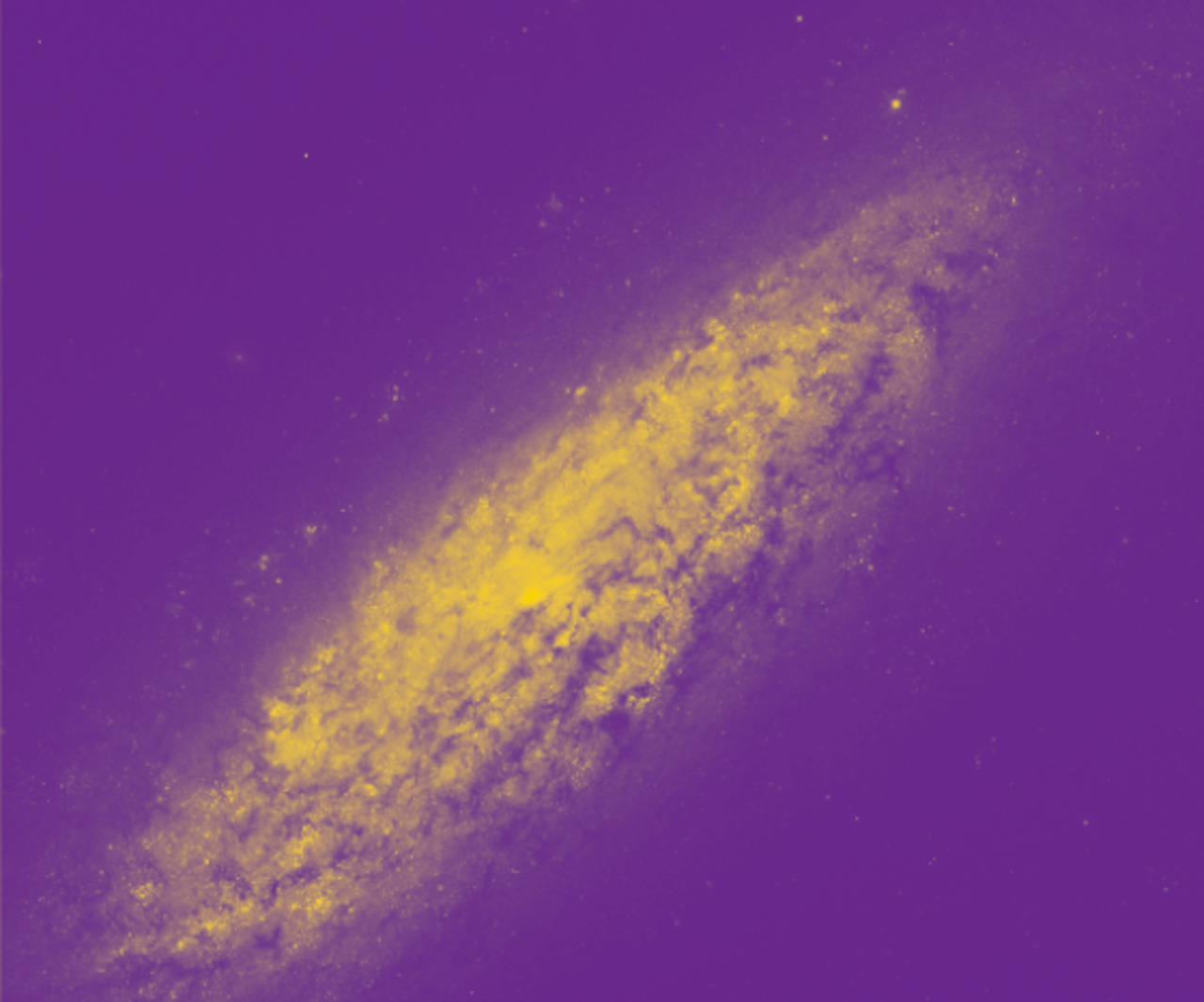It’s one of the most anomalous galaxies in the universe, but at first glance, it just looks like a crushed silver pellet.
The galaxy, named NGC 1052 is actually slightly blue, but is visible only through a multi-billion dollar constellation of telescopes scattered through Earth and space, and is special on a universal scale. Based on its shape and size, NGC 1052 should have an appreciable amount of dark matter. But according to research published in Nature today, the galaxy most likely has absolutely none. For more than half a century, a small group of scientists have been transfixed by this particular galaxy.
Dark matter is one of the most looming conceptual holes in astronomy. Most dark matter is thought to be made up of baryons—a strong type of particle that emits no radiation, even when it interacts with objects that we can see.
NGC 1052 defies the emergent gravity paradigm, which was proposed only in 2014 and states that dark matter is born—inevitably and without exception—from ordinary matter, so it should be detectable everywhere. NGC 1052 is filled with ordinary matter, yet despite what the paradigm suggests, the study found there was not nearly the amount of dark matter that would be suggested by the galaxy's existence; there was effectively none.
NGC 1052 could’ve been born from the gas tossed aside during the collision and merging of two galaxies. Gas that was low in star building blocks, like hydrogen and helium, could’ve been swept up by space wind and shaped into an uneven circle. Alternatively, jets—the violent reaction of heavy, black-hole-creating particles changing phases into plasma—could’ve separated a group of gas flowing into the New General Catalogue, forming NGC 1052 in the aftermath. From any of these conditions of birth, according to the study, black matter should have emerged. It didn’t.
Dark matter is already the exception to how astronomers see and understand the universe.
Now, NGC 1052 has emerged as an exception to our rough grasp of what dark matter is. In the midst of this confusion, there is no leading counter-hypothesis that would explain why all of this is. It’s simply given way to a new wave of questions.
